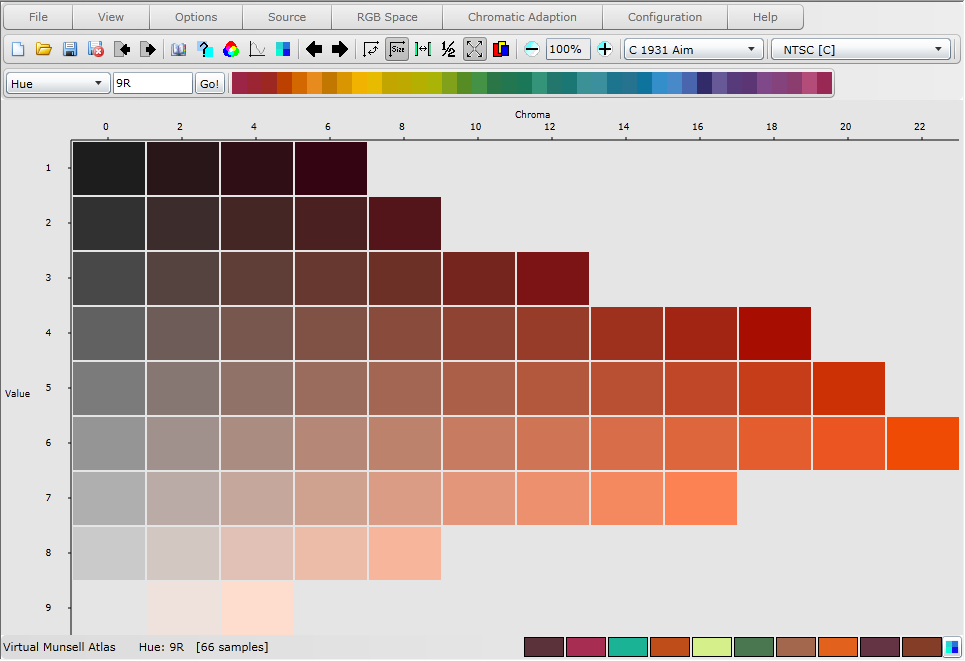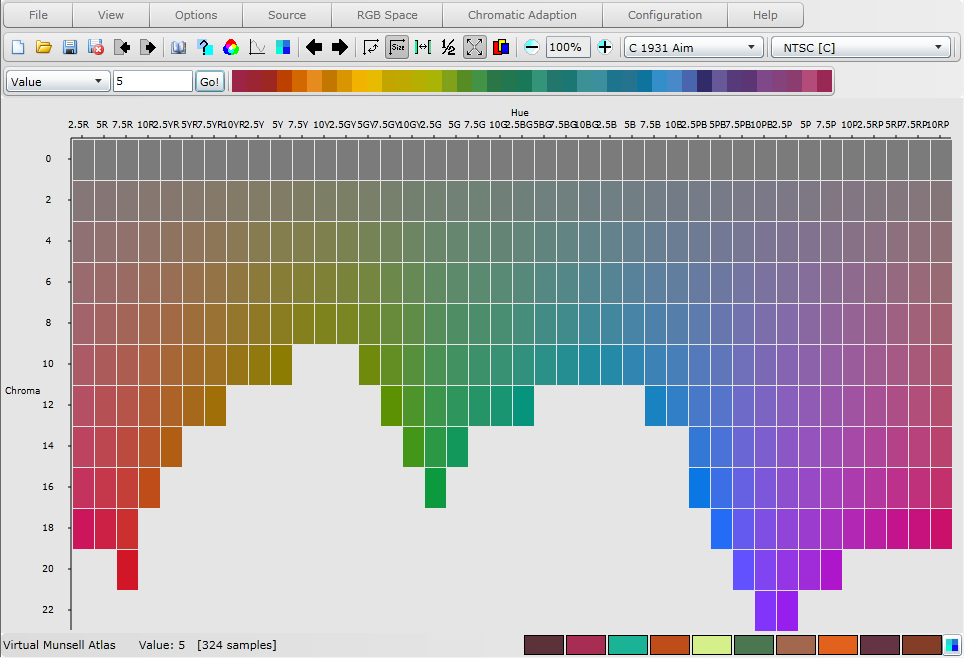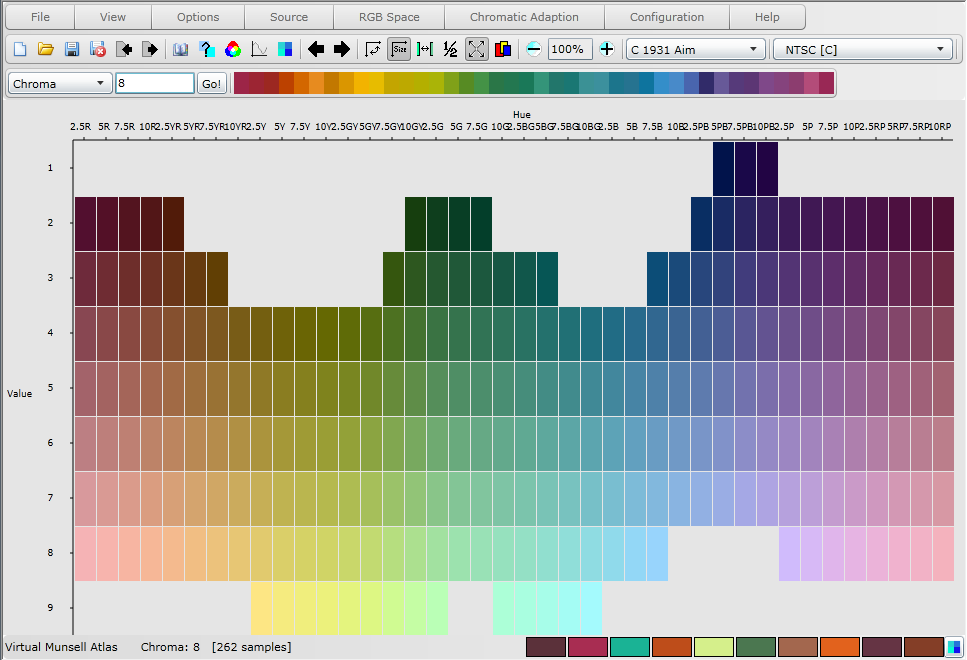|
Munsell Colour Order System
|
The Munsell system was devised by A. H. Munsell (1905) and is based on the guiding principle of equal visual perception. Each colour is identified in terms of three attributes, hue, value and chroma, that are arranged into orderly scales of equal perceptual intervals.
Hue relates to the quality of colour which we describe by the words red, yellow, green etc. The Munsell hue scale consists of five primary hues (Red, Yellow, Green, Blue, Purple) augmented by five intermediary hues (Yellow-Red, Green-Yellow, Blue-Green, Purple-Blue, Red-Purple) positioned ten hue steps apart, producing 100 equal perceptually spaced hues. Munsell hue notation (H) is expressed by a number and a letter combination where the letters are taken from the names of the 10 basic hues and the number is greater than 0 but less than or equal to 10. The numeric component represents the departure of the defined hue from the basic hue.
All 40 of the hues contained in the Munsell atlas can be directly selected from
the quick hue chart and intermediary hues can be defined using tby selecting the
plane type "Hue" and specifying the required hue as the plane value
(in the example below 9R).
|

|
|
Munsell value (V) indicates the lightness of a colour in relation to a neutral grey scale ranging from absolute black to absolute white. The grey scale has a range between 0 and 10, with absolute black represented by V = 0, and absolute white by V = 10. This scale is divided into perceptually equal steps, for example, V = 5 is a middle grey that appears halfway between absolute black and absolute white, V = 4 is darker than V = 5 and V = 6 is lighter than V = 5.
|

|
Munsell chroma (C) describes the degree of departure of a given colour (which is not white, grey or black) from a neutral grey of the same lightness. The Munsell chroma scale ranges from 0 for a neutral grey up to an upper limit which is dependent on Munsell hue and value. Different hues have varying upper chroma limits due to the equal perceptual scaling of Munsell colour space.
The steps of Munsell chroma and value are arranged at equal perceptual intervals, such that two steps in chroma and one step in value represent the same perceptual colour difference.
|

|
The hue scale forms a closed circle such that the one hundredth hue is followed by the first, and the individual chroma scales extend to the limit of perceivable colours such that all possible colours are contained in Munsell colour space. Each individual step along the hue, value and chroma axes is subdivided into decimal fractions so that all possible colours in Munsell colour space can be uniquely identified.
The complete Munsell notation is H V/C. For example, 5PB 4/6 describes the colour with the Munsell hue 5PB (purple-blue), Munsell value 4, and Munsell chroma 6.
Neutral (achromatic) colours are expressed as N V/, where N signifies the neutral scale and the Munsell value is substituted for V. For example, absolute white is expressed as N 10/ and a middle range grey as N 5/.
|
|
Copyright 2011, Virtual Colour Systems Ltd. All Rights Reserved
|